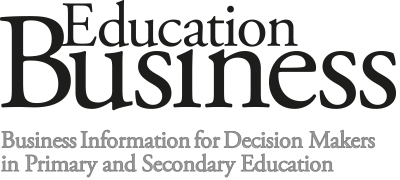
Creating inclusive mainstrean schools
As mainstream schools strive to become more inclusive, new research from Inclusion in Practice sheds light on what truly works. Drawing on insights from over 8,000 educational settings, this feature explores five key principles that underpin effective SEND provision
The landscape of special educational needs and disabilities (SEND) provision in mainstream schools continues to evolve, with schools and trusts demonstrating determination and creativity in their approaches to inclusion despite challenging circumstances. Recent research from Inclusion in Practice, a collaborative initiative convened by Tom Rees (Chair of the Expert Advisory Group for Inclusion), Ambition Institute and the Confederation of School Trusts, gathered evidence from 165 submissions representing over 8,000 educational settings across England.
This sector-wide endeavour reveals five fundamental principles that underpin effective inclusive practice. These insights, drawn directly from practitioners, demonstrate that inclusion is not about creating separate systems or additional layers of support, but about fundamentally rethinking how schools operate to ensure every child can thrive.
Knowing children well, early and often
The foundation of truly inclusive practice lies in developing deep, early understanding of each child. This goes beyond simply identifying whether a student has SEND – it requires a comprehensive approach to understanding individual barriers to learning and building relationships that enable tailored support.
Effective schools use transition periods strategically. At Blaise High School within Greenshaw Learning Trust, the Special Educational Needs Coordinator (SENDCO) visits each feeder primary school to meet staff and review existing support arrangements. Pupils attend small group sessions during the summer term, create individual pupil passports, and meet key adults before starting secondary school.
Schools are implementing structured observation systems that combine classroom routines, pastoral conversations, and professional judgement. One trust described using classroom observations alongside pastoral notes from teaching assistants and mentors to identify which adjustments might help pupils progress, while small group interventions provide immediate support as relationships develop.
High quality and evidence-informed teaching practice
The research consistently demonstrates that inclusion begins with expert teaching. When high-quality, evidence-informed teaching practices are embedded consistently across schools, more learners remain in mainstream classrooms and make meaningful progress.
Schools are implementing frameworks that make good practice systematic rather than dependent on individual teacher expertise. Some referenced established models like the Education Endowment Foundation’s “5-a-day” approach, which emphasises metacognition, flexible grouping, and explicit instruction. Others have developed internal frameworks or teaching toolkits that establish consistent expectations around core teaching practices. Crucially, these schools avoid treating SEND adaptation as a separate consideration.
At Ark Soane Academy in West London, inclusion is embedded into every aspect of curriculum design and teacher development. Staff participate in pre-term induction focusing on inclusive pedagogy, observing lessons and aligning on key strategies. The school’s “Soane Essentials” provide shared pedagogical principles that guide all classroom practice, including consistent lesson structures using specially designed booklets that reduce cognitive load and support attention to key learning.
Coherent and expert targeted support
Effective inclusive schools organise their targeted support through clear, tiered frameworks that help staff understand what should be available universally, when more focused intervention is appropriate, and how to access specialist expertise when needed.
These graduated models typically include three levels: universal provision (high quality teaching for all), targeted support (additional interventions for pupils not making expected progress), and specialist provision (intensive support for pupils with persistent barriers to learning). This clarity helps staff identify earlier who needs support and respond more confidently.
Star Academies exemplifies this systematic approach through their comprehensive “All Stars Succeed” strategy. The trust has developed detailed “Star Maps” – individual pupil profiles that combine assessment data, identified barriers to learning, and recommended teaching strategies. Importantly, these maps limit recommendations to three to five high-leverage strategies per child, ensuring teachers can realistically implement the guidance. More about this specific practice is available as one of a series of published case studies.
Many schools are training existing staff as Emotional Literacy Support Assistants (ELSAs) or developing other specialist roles within the mainstream environment. This reduces reliance on external services while ensuring support remains closely connected to classroom teaching.
At Ormiston Academies Trust, Specialist Internal Provisions (SIPs) across six primary schools provide flexible, tailored support within mainstream settings, enabling pupils to remain integrated in school life while accessing targeted help.
Strengthening inclusion through relationships and partnerships
Inclusive schools recognise they cannot work in isolation. The research reveals that strong relationships with families, local authorities, and external services are essential for creating coherent support systems.
Schools are developing more collaborative approaches to family engagement. Some establish family support hubs that host services, run parent learning programmes, and provide structured spaces for shared decision-making. Trust-wide approaches help maintain consistency, with leaders establishing clear expectations for accessible communication formats including audio and video options.
Professional learning communities strengthen inclusive practice through formal learning networks and cross-school coaching. At Windsor Academy Trust, termly Professional Learning Communities facilitate review of current research and effective practices, while Learning Tours enable SENDCOs to observe excellent practice and implement similar approaches in their own schools.
Inclusion as a strategic and shared responsibility
The most effective inclusive schools treat inclusion as a core leadership priority and principle, not a separate system running parallel to mainstream education. When responsibility is shared across teams and guided by clear values, schools can align their planning, development, and accountability processes to drive consistent practice.
This strategic approach manifests in various ways. Directors of Inclusion drive visibility and coordinate strategy across multiple schools, while trustees and governors hold executives to account for inclusive practice through scrutiny of progress data and resource allocation.
Dixons Academy Trust exemplifies this integrated approach through their “Mountain Rescue” model, which brings together senior leaders for SEND, safeguarding, and behaviour in shared departmental spaces. This physical and operational integration ensures that support is coordinated and that quality teaching remains the foundation, with targeted pastoral support layered appropriately on top.
The trust has also developed flexible grouping arrangements that challenge traditional assumptions about classroom organisation. Rather than removing pupils with SEND from mainstream lessons, they deploy additional teachers to work with larger groups while providing intensive small-group teaching led by qualified teachers – ensuring high-quality teaching is available to all pupils.
The path forward
These five principles demonstrate that effective inclusion requires fundamental consideration of how schools organise themselves, train their staff, and relate to their communities. The evidence shows promising outcomes where schools embrace these approaches systematically.
However, these examples also highlight the need for broader system reform. As Tom Rees, chair of the Expert Advisory Group for Inclusion, noted: “This report gives us hope and encouragement, in highlighting pockets of effective and evidence-informed practice being implemented in our schools which we can learn from and build on. But this project has also reminded us how much inconsistency exists within the SEND system in terms of frameworks, training, advice and resources. We should be ambitious for much better support for teachers and schools in the future. This means clearer use of evidence, sharper accountability, smarter systems, and putting children’s needs – not labels – at the centre.”
The schools and trusts featured in this research demonstrate that while the SEND system faces well-documented challenges, there is strong appetite for improvement. The collaborative Inclusion in Practice initiative provides a foundation for sharing this learning more widely. More detailed findings are available through the published report and case studies.
As the education system navigates complex funding and policy challenges, these principles offer a practical framework for schools committed to ensuring every child can succeed in mainstream education.
Latest News
13/11/2025 - 09:49
The regulations have been set following a second consultation and detailed collaborative working with organisations and people across deaf and hearing communities.
13/11/2025 - 09:39
The Education Committee has published a letter to the Secretary of State for Education asking for more detail about the Department for Education’s work on developing its SEND reforms.
13/11/2025 - 09:26
New analysis by NFER has highlighted the uneven distribution of pupils with special educational needs and disabilities (SEND) across mainstream schools in England.
12/11/2025 - 09:27
Schools will be issued with AI-powered minimum attendance improvement targets from this month, the Department for Education has announced.
11/11/2025 - 09:50
Research has revealed the full extent of how pupils from higher-income families are favoured by high-performing secondary school admissions criteria, and suggests ways to make the admissions system more equitable.







